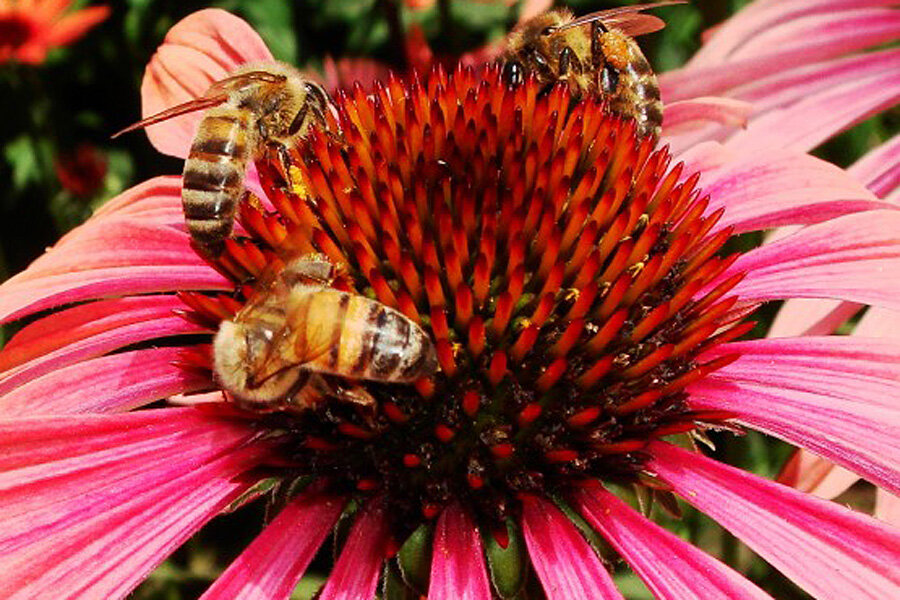Is a tiny fungus killing honeybees?
Loading...
The sharp decline in honeybee populations over the past 10 years has left scientists baffled, leading them to propose a variety of causes from cell phone signals to pesticides. Now, scientists say they have found another puzzle piece.
A team led by Daren Eiri from the University of California, San Diego and Guntima Suwannapong from Burapha University in Thailand, have found that a single-celled parasite can infect honeybee larvae, shortening the bees' lifespans and potentially contributing to so-called colony collapse disorder.
Previous scientific studies suggested that honeybee larvae could not be affected by Nosema ceranae, a microbial fungus. “Basically half the life cycle of the honeybee was ignored in thinking about how to manage and treat Nosema,” says James C. Neih, a professor at the University of California, San Diego and the faculty sponsor behind this study.
Contrary to earlier belief, the current study concludes that larvae can indeed be infected. “Now we have a reason to go out there and look and see whether it’s [Nosema ceranae] causing a problem for young bees or larvae,” says Dr. Neih.
As colony collapse disorder intensifies, Nosema ceranae, a species first described in the 1990s, has come under heightened scrutiny. In June, 2014, President Obama signed a presidential memo ordering the federal government to devise a plan to protect pollinators.
This new study finds that larval infection “may have a detrimental effect on the honeybees later on,” says Neih.
“Overall losses of honeybees hives in the country are 40 percent now,” says Chensheng Lu, an associate professor of environmental exposure biology at Harvard University’s School of Public Health who was not affiliated with this study. Dr. Lu has undertaken and published multiple studies on the effects of neonicotinoids on honeybee colonies.
When asked what factors cause colony collapse disorder, Neih emphasizes, “It's fairly widely acknowledged that multiple factors are at play. We do know that there is a synergy between bees that are exposed to pesticides and Nosema infection for example, so it makes it worse when both are present.”
The causal relationship between Nosema ceranae and CCD is contested by other scientists, including Lu, who published his own research in 2014 that blamed a class of pesticides containing nicotine-like chemicals.
“I think that our study has clearly demonstrated neonicotinoids are the sole responsible factor that lead to colony collapse disorder,” Lu says.
But even if pesticides are ultimately responsible for CCD, it could be that bees are facing an additional threat posed by Nosema.
“It’s quite possible that you have a reservoir of infection inside the nest that will go untreated and will reemerge when these bees become adults,” says Neih. “Nosema is found in a high proportion of managed bee colonies throughout the world and in the United States.”
While treatments for Nosema ceranae are currently available for adult bees, “Perhaps we can develop a treatment that targets not only adult bees but also larvae that are infected,” says Neih.
But Lu cautions, “I would emphasize again that the loss of honeybee hives could be due to disease-like infestation or colony collapse disorder, and in my opinion the cause of these two types of mortalities are very different and should not be combined as one single effect.”
“I would certainly not want people to say that this [Nosema ceranae] is what causes colony collapse,” says Neih. “Our study is suggesting that it could be a problem and now we need to look.”






